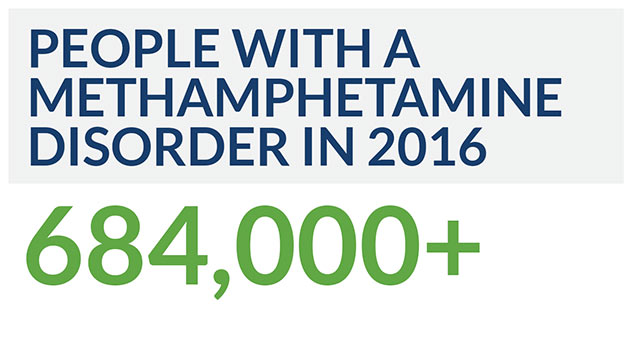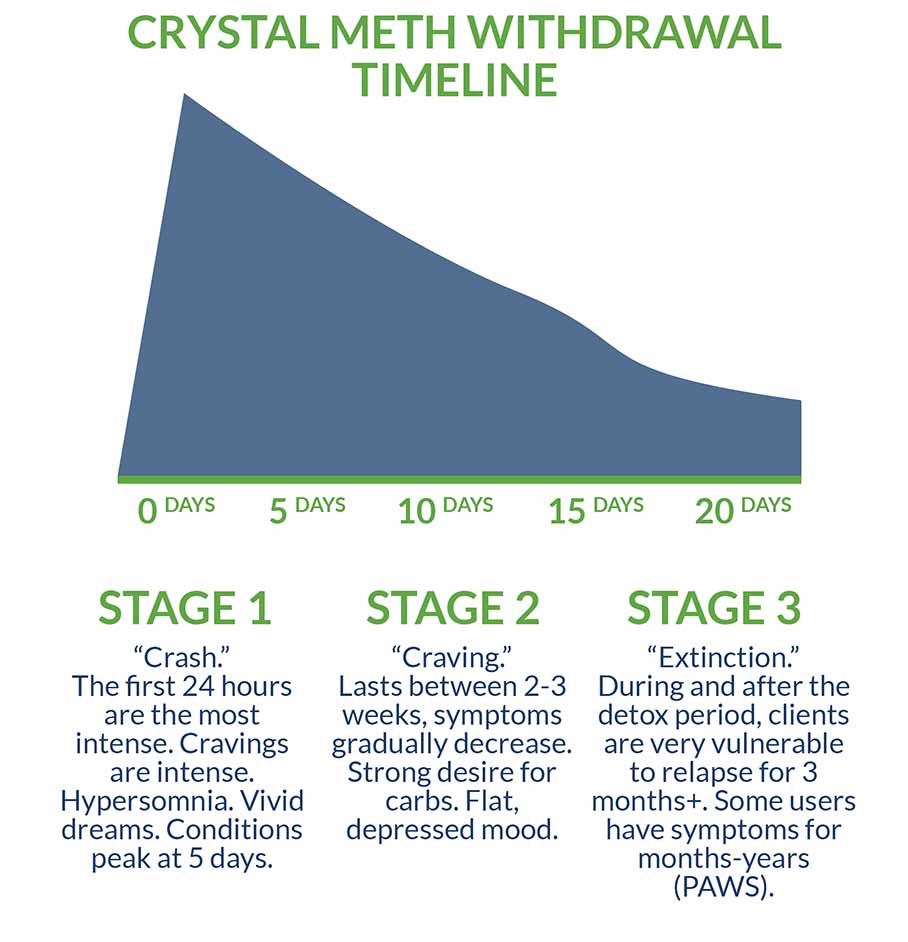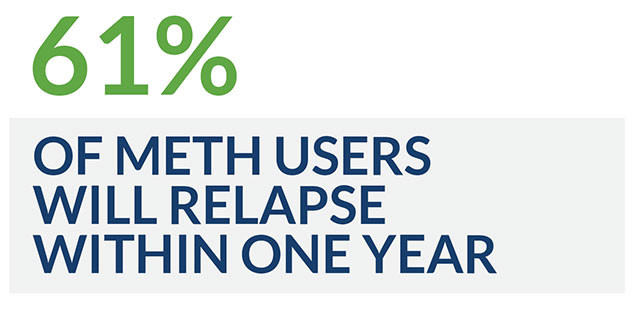Read the latest and greatest from our team
of incredible specialists.

Beach House Recovery Center » Blog » Crystal Meth Detox Guide
There are no legal uses for crystal methamphetamine, also called crystal meth, “ice” or “glass.” Methamphetamine, however, has a long history, originally given to soldiers during World War II to keep them awake. Meth has been used for weight loss and depression, although the only current legal meth use is a tablet rarely prescribed for the treatment of obesity and attention-deficit-hyperactivity disorder (ADHD). Today, crystal meth, the illegally produced form of methamphetamine, is a popular party drug that comes in either shiny blue-white rocks or clear crystal chunks. The drug is highly addictive, even after a single use.

So-called “meth labs” illegally manufacture crystal meth by mixing various over-the-counter ingredients with poisonous, corrosive and carcinogenic chemicals, including acetone, battery acid, bleach, lead, and red phosphorus, among others. Users typically place the drug in a small glass pipe and smoke it, although it is also often snorted, swallowed, or injected into a vein. It stimulates the central nervous system to produce a quick rush of euphoria.

About 667,000 people aged 12 and older were current methamphetamine users in 2016, which is roughly 0.7 million. Of this number, about 9,000 adolescents, 65,000 young adults, and 594,000 adults were current (past month) meth users. In 2016, an estimated 684,000 people had a methamphetamine use disorder, meeting diagnostic criteria for either methamphetamine dependence or abuse. Besides addiction, long-term meth use can result in severe dental problems, psychosis, stroke, irreversible and reversible brain damage, cardiovascular problems, mood disturbances, memory loss, significant weight loss, and aggressive or violent behavior.
Withdrawal from crystal meth may be characterized by the following withdrawal symptoms:
While crystal meth withdrawal in and of itself rarely causes life-threatening physical symptoms, its mental–emotional effects can drive people to act in violent or dangerous behavior or even think about and attempt suicide.
The intensity and duration of withdrawal from crystal meth, as with any drug of abuse, can vary and is affected by several factors: the length of time the person has been addicted to the drug, regular dosage size, quality of meth used, where detox occurs (setting), age (older people may have a harder time with withdrawal), history of other drug use (including alcohol), mental and physical health before and during crystal meth use, and the presence of any co-occurring mental disorders, including clinical depression.

Crystal meth withdrawal is a process that involves a predictable set of symptoms that begin shortly after discontinuing use of the drug. Withdrawal from crystal meth consists of physical and psychological symptoms, with the physical withdrawal manifestations wearing off much quicker than the psychological ones. Withdrawal typically occurs in phases:

For anyone who wants to overcome crystal meth dependence or addiction, it often comes down to the preliminary decision to choose inpatient or outpatient treatment. Both crystal meth treatment forms can last up to three months or longer, involve clinical and medical therapy, and may include:
Inpatient treatment, also known as residential treatment and inpatient rehab, involves residing in a 24/7 medically-supervised facility for a three-month or longer period. Where inpatient care is highly recommended is for those individuals who:
One of the most compelling arguments for inpatient care is the fact that the client remains in a supportive environment away from the constant or recurring temptations and triggers to relapse. With residential treatment, highly-trained medical professionals and staff are always available to help with any physical or emotional needs.
Research published in the Journal of Addiction Medicine showed that an eight-week regimen of aerobic exercise training in MA-dependent patients in residential rehab showed significant improvement in performance, muscle strength and endurance, and body composition. Since crystal meth addiction often leaves the user gaunt, malnourished and in poor overall health, therapy that helps the client recover in physical condition metrics can aid in recovery prospects long-term.
Learn more about Inpatient Crystal Meth Rehab
Options for outpatient care can vary, from sending clients back to their normal residences and requiring they come back for three-hour appointments on a three-day-a-week schedule, to providing housing on the campus of the detox center and including lengthy therapy sessions occurring five to seven days a week. At some centers, newly detoxed crystal meth patients may start off in a shorter inpatient program (for example, 35 days) before transitioning to an outpatient program.
Outpatient care may be preferable for someone who:
Learn more about Outpatient Crystal Meth Rehab
Since withdrawal symptoms for crystal meth addiction may be unpleasant at best and significantly uncomfortable or worse, it’s never advisable to attempt crystal meth detox at home. For this reason, among others, crystal meth detox should always take place in an inpatient detox or residential detox and treatment setting. Granted, some individuals have done an at-home crystal meth detox, yet this poses serious risks, especially for those who also have a co-occurring mental health disorder or have previously attempted or talked about suicide.
Even when crystal meth has been used for only a short period of time, the user is in overall good health and has a reliable support system in place, medically supervised inpatient treatment is preferable because:
While there are no current FDA-approved medications for treating methamphetamine addiction, detox centers, and inpatient or residential treatment centers have licensed physicians who can prescribe various treatment approaches. This may entail a regimen of vitamins to restore the body’s vitality and prescribing medications to help alleviate symptoms of depression, anxiety, PTSD, psychoses, and other mental health disorder diagnoses. However, some medications currently under study or in clinical trials show potential to reduce the intensity of crystal meth withdrawal symptoms and risk of relapse:
Unlike some drugs of abuse, for which detox may require a gradual, more tapered approach, “cold turkey” is the preferred approach for detoxing from crystal meth. When detox is supervised by medical professionals, certain prescription medications can be administered to alleviate specific withdrawal symptoms, including drugs to ease depression, anxiety, suicidal thoughts, and other medical issues.
There is never a single consideration in helping you decide on the choice of a treatment program. Instead, there are several factors to carefully weigh. First and foremost, identify the types of inpatient or outpatient options and various medical process approaches to treatment. Other points to consider include:
Depending on treatment methods, additional facilities provided and individual patient needs, crystal meth detox and rehab can be expensive. However, most health insurance policies, including services provided through the Veterans Affairs Department, will take care of at least part of the expenses for addiction treatment. Also important is the fact that some healthcare costs may be tax deductible. Fortunately, most health insurance policies, including Veterans Affairs, cover at least part of addiction-treatment expenses. Some healthcare costs are even tax deductible, although neither tax considerations nor affordability should ever stand in the way of getting treatment.

Relapse rates for crystal meth are quite high— far greater than for several other addiction disorders. Sixty-one percent of meth users will relapse within one year after completing treatment. Also noteworthy is that dependent methamphetamine users are a particularly high-risk group for psychosis. A number of research studies on craving symptoms in meth users note that the propensity of craving as a relapse predictor strongly indicates a need to treat comorbid psychiatric problems, especially in male meth users.
Research shows that individuals with methamphetamine use disorder (MA) have “unique brain activity” when exposed to MA-related cues – even after long-term drug rehab. Although not as well studied, researchers found that libido brain response may be restored following long-term MA rehab. To help maximize your chances of sustainable recovery, it is imperative that you identify and put into practice alternative techniques to manage stress and find pleasure in life.
Among these techniques are ongoing therapy, continuing treatment for co-occurring illnesses, and regular participation in support groups. In fact, participation in peer support groups and the ability to interact with and share stories of recovery, according to self-reports by over 80 percent of such participants, help promote empathy and accountability to reduce relapse temptation. Other characteristic elements of effective aftercare include:
Learn more about Crystal Meth Aftercare
For more about crystal meth detox and recovery, check out these related articles:
Addiction. “The prevalence of psychotic symptoms among methamphetamine users.” Retrieved from https://www.ncbi.nlm.nih.gov/pubmed/16968349/
Biological Psychiatry. “A Methamphetamine Vaccine Attenuates Methamphetamine-Induced Disruptions in Thermoregulation and Activity in Rats.” Retrieved from https://www.biologicalpsychiatryjournal.com/article/S0006-3223(12)00803-7/abstract
ClinicalTrials.gov. “Study of Medical Treatment for Methamphetamine Addiction (BUP PGx).” Retrieved from https://clinicaltrials.gov/ct2/show/study/NCT00833443?term=%22Methamphetamine%22+and+%22Addiction%22&rank=2§=Xa80156
Drug and Alcohol Dependence. “Time to relapse following treatment for methamphetamine use: a long-term perspective on patterns and predictors.” Retrieved from https://www.ncbi.nlm.nih.gov/pmc/articles/PMC4550209/
Drug and Alcohol Review. “A pilot randomized controlled trial of modafinil during acute methamphetamine withdrawal: Feasibility, tolerability, and clinical outcomes.” Retrieved from https://onlinelibrary.wiley.com/doi/full/10.1111/j.1465-3362.2012.00473.x
Frontiers in Psychiatry. “Craving Responses to Methamphetamine and Sexual Visual Cues in Individuals with Methamphetamine Use Disorder after Long-Term Drug Rehabilitation.” Retrieved from https://www.ncbi.nlm.nih.gov/pmc/articles/PMC5917670/
International Journal of Medical Sciences. “Recombinant AAV8-mediated intrastriatal gene delivery of CDNF protects rats against methamphetamine neurotoxicity.” Retrieved from https://www.ncbi.nlm.nih.gov/pubmed/28553166
Journal of Addiction Medicine. “Eight Weeks of Exercise Training Improves Fitness Measures in Methamphetamine-Dependent Individuals in Residential Treatment.” Retrieved from https://journals.lww.com/journaladdictionmedicine/Abstract/2013/03000/Eight_Weeks_of_Exercise_Training_Improves_Fitness.7.aspx
Journal of Addiction Medicine. “Sex Differences in the Association Between Internalizing Symptoms and Craving in Methamphetamine Users.” Retrieved from https://journals.lww.com/journaladdictionmedicine/Abstract/2016/12000/Sex_Differences_in_the_Association_Between.4.aspx
Journal of Neuroimmune Pharmacology. “Methamphetamine-Associated Psychosis.” Retrieved from https://www.ncbi.nlm.nih.gov/pmc/articles/PMC3280383/
Journal of Neurology, Neurosurgery & Psychiatry. “Stroke and methamphetamine use in young adults: a review.” Retrieved from https://jnnp.bmj.com/content/88/12/1079
MedlinePlus. “Methamphetamine overdose.” Retrieved from https://medlineplus.gov/ency/article/007480.htm
National Institute on Drug Abuse. “Availability and Effectiveness of Programs to Treat Methamphetamine Abuse.” Retrieved from https://archives.drugabuse.gov/testimonies/2006/availability-effectiveness-programs-to-treat-methamphetamine-abuse
National Institute on Drug Abuse. “High rates of dental and gum disease occur among methamphetamine users.” Retrieved from https://www.drugabuse.gov/news-events/news-releases/2015/11/high-rates-dental-gum-disease-occur-among-methamphetamine-users
National Institute on Drug Abuse. “Methamphetamine.” Retrieved from https://www.drugabuse.gov/drugs-abuse/methamphetamine
Saudi Pharmaceutical Journal. “Methylphenidate vs. resperidone in treatment of methamphetamine dependence: A clinical trial.” Retrieved from https://www.sciencedirect.com/science/article/pii/S1319016413000418
Substance Abuse and Mental Health Services Administration. “Key Substance Use and Mental Health Indicators in the United States: Results from the 2016 National Survey on Drug Use and Health.” Retrieved from https://www.samhsa.gov/data/sites/default/files/NSDUH-FFR1-2016/NSDUH-FFR1-2016.htm#illicit12
Substance Abuse and Rehabilitation. “Benefits of Peer Support Groups in the Treatment of Addiction.” Retrieved from https://www.ncbi.nlm.nih.gov/pmc/articles/PMC5047716/
Synapse. “Racemic gamma-vinyl-GABA (R,S-GVG) blocks methamphetamine-triggered reinstatement of conditioned place preference.” Retrieved from https://www.ncbi.nlm.nih.gov/pubmed/19016239
Whether you’re researching for yourself or a loved one, Beach House can help. We understand that this is a serious time in your life and that the treatment center you choose matters. We want you to feel comfortable and empowered to make the right decision for yourself, a friend, or a family member. This is why a counselor is waiting and available to answer your questions and help put your mind at ease regarding the next steps. Many of the staff at Beach House have walked in your shoes. If you feel you’re ready or want more information about how to help a loved one, we can help today. You can also learn why we are voted the #1 rehab for addiction treatment in Florida.
We accept most major insurance plans and can verify your benefits quickly and confidentially.
We’re committed to helping you access the care you need, our admissions counselors can guide you through your coverage options and available resources.





"*" indicates required fields